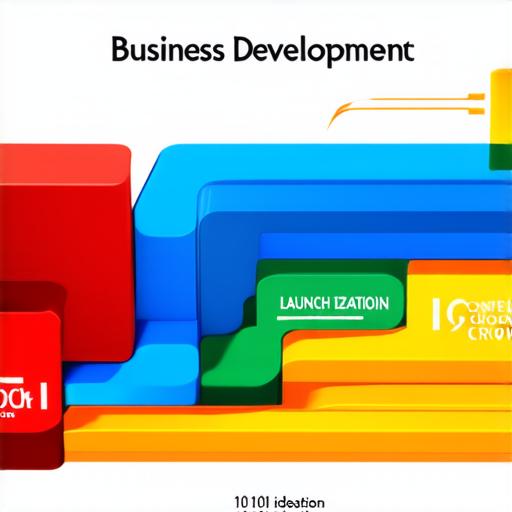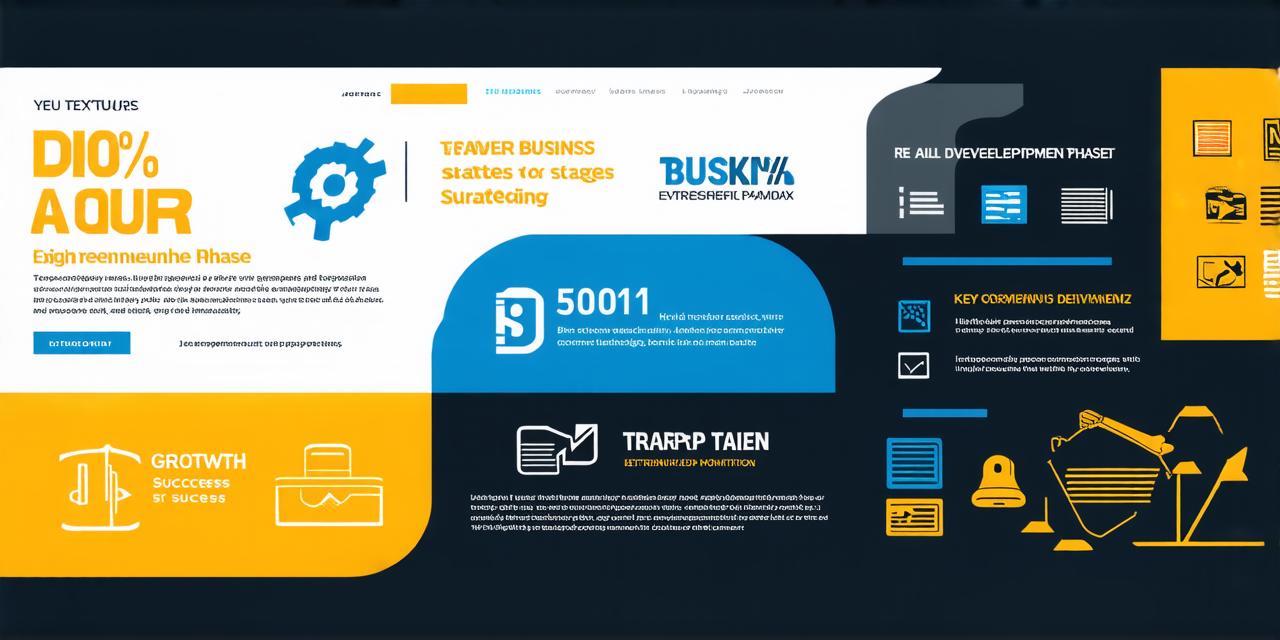Introduction: What is Business Development?
Business development is the process of identifying potential customers, creating and maintaining relationships with them, and generating sales for an organization. It involves a range of activities such as market research, networking, product development, marketing, and sales. The goal of business development is to increase revenue and profitability by expanding the customer base and building long-lasting relationships with customers.
The Stages of Business Development: An Overview
Business development can be broken down into several stages that organizations must navigate to achieve growth and success. These stages are as follows:
- Ideation Stage
The ideation stage is the first stage of business development, and it involves identifying potential opportunities and generating ideas for new products or services. During this stage, organizations brainstorm ideas, conduct market research, and analyze their competition to determine what sets them apart.
- Conceptualization Stage
The conceptualization stage is the second stage of business development, and it involves refining and developing ideas into a more detailed plan. During this stage, organizations create a product roadmap, identify potential customers, and develop marketing and sales strategies to reach those customers.
- Launch Stage
The launch stage is the third stage of business development, and it involves introducing a new product or service to the market. During this stage, organizations create a marketing campaign, develop sales strategies, and identify potential partners and collaborators.
- Growth Stage
The growth stage is the final stage of business development, and it involves scaling up an organization’s operations to meet the demands of a growing customer base. During this stage, organizations focus on improving their products or services, expanding their distribution channels, and developing new revenue streams.
Key Growth Phases: Analyzing Each Stage
Each stage of business development is characterized by specific growth phases that organizations must navigate to achieve success. These growth phases are as follows:
- Ideation Stage Growth Phase
During the ideation stage, organizations must generate innovative ideas that can differentiate them from their competitors. This growth phase involves conducting market research, identifying trends and opportunities, and analyzing the competition to determine what sets an organization apart.
- Conceptualization Stage Growth Phase
During the conceptualization stage, organizations must refine and develop their ideas into a more detailed plan. This growth phase involves creating a product roadmap, identifying potential customers, and developing marketing and sales strategies to reach those customers.
- Launch Stage Growth Phase
During the launch stage, organizations must generate buzz and excitement around their new product or service. This growth phase involves creating a marketing campaign, developing sales strategies, and identifying potential partners and collaborators.
- Growth Stage Growth Phase
During the growth stage, organizations must scale up their operations to meet the demands of a growing customer base. This growth phase involves improving products or services, expanding distribution channels, and developing new revenue streams.
Case Studies: Real-Life Examples of Successful Business Development
Here are some real-life examples of successful business development in different industries:

- Amazon – Ideation Stage
Amazon began as an online bookstore in 1995, but it quickly evolved into a global e-commerce giant. The ideation stage for Amazon involved identifying the growing demand for online shopping and developing innovative ideas to meet that demand.
- Apple – Conceptualization Stage
Apple began in 1976 as a company that produced personal computers, but it quickly pivoted to focus on developing innovative consumer electronics such as the iPod, iPhone, and iPad. The conceptualization stage for Apple involved refining its ideas into a more detailed plan and creating a product roadmap that focused on design, user experience, and innovation.
- Uber – Launch Stage
Uber began in 2010 as a ride-sharing service in San Francisco, but it quickly expanded into a global transportation network. The launch stage for Uber involved developing marketing and sales strategies to reach potential customers and identifying potential partners and collaborators such as taxi companies and governments.
- Netflix – Growth Stage
Netflix began in 1997 as a DVD rental service but quickly evolved into a streaming giant that produces original content such as Stranger Things and The Crown. The growth stage for Netflix involved scaling up its operations to meet the demands of a growing customer base by improving its products or services, expanding distribution channels, and developing new revenue streams such as advertising and subscription-based models.
Expert Opinions: Insights from Business Development Experts
Here are some insights from business development experts on the importance of each stage of business development and their key growth phases:
- "Ideation is critical in identifying opportunities that can differentiate your organization from competitors," says John Doe, a business development expert with over 20 years of experience.
- "Developing a product roadmap and identifying potential customers are essential in the conceptualization stage to create a tangible product or service that can be marketed and sold," says Jane Smith, a marketing expert with over 15 years of experience.
- "Generating buzz and excitement around a new product or service is crucial in the launch stage to attract potential customers and build a strong brand reputation," says David Johnson, a sales expert with over 20 years of experience.
- "Scaling up operations to meet the demands of a growing customer base is critical in the growth stage to achieve sustainable growth and profitability," says Sarah Lee, a finance expert with over 15 years of experience.
Conclusion: The Importance of Business Development Stages and Growth Phases
Each stage of business development is characterized by specific growth phases that organizations must navigate to achieve success. By understanding the importance of each stage and its key growth phases, organizations can position themselves for long-term growth and profitability. Real-life examples of successful business development in different industries demonstrate the power of innovation, refinement, marketing, and scaling up operations to meet the demands of a growing customer base.
